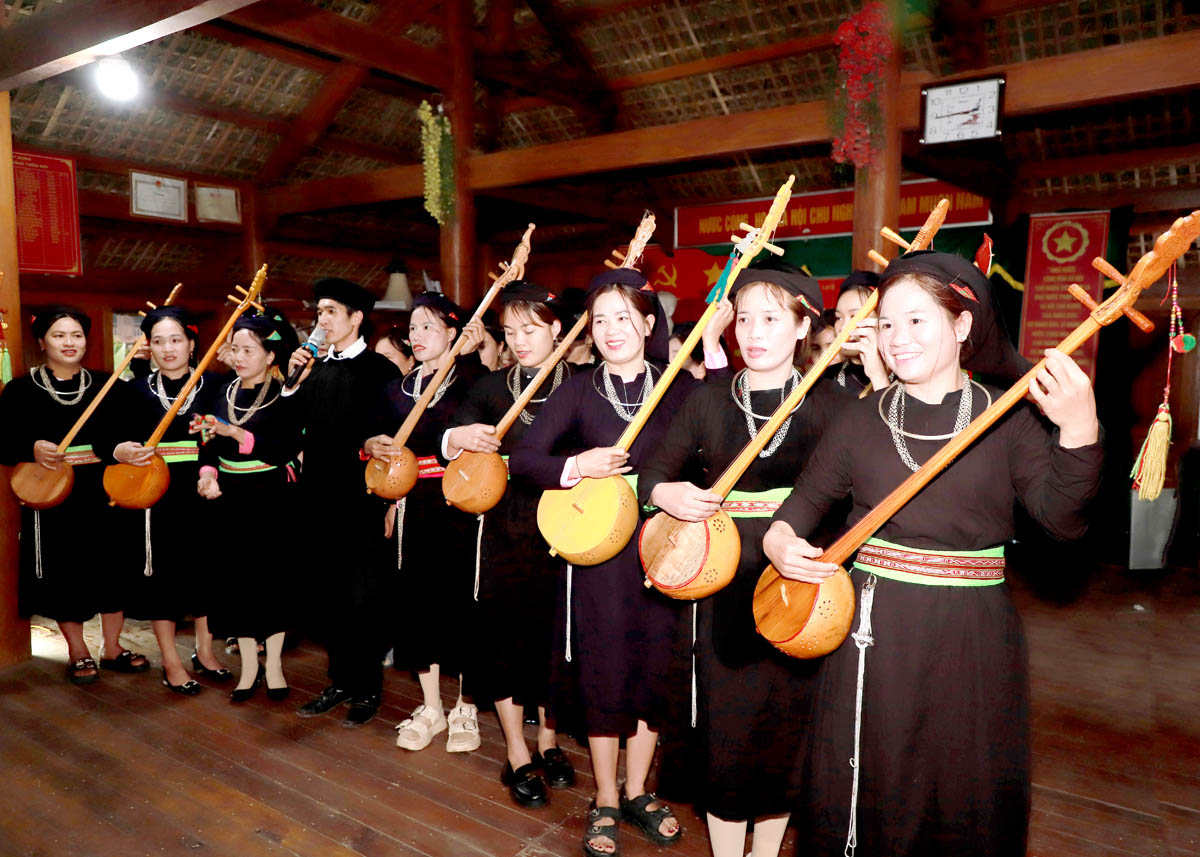Teaching and preserving cultures of ethnic groups
BHG - Ha Giang is a mountainous province which boasts the rich cultural identities of 19 ethnic groups. Many village elders, community leaders, and patriarchs have become teachers and examples in ethnic unity and following the Party's policies and the State's regulations while preserving their ethnic cultural identities.
Recently, the Ha GiangProvincial Department of Culture, Sports, and Tourism organised training classes to enhance knowledge and skills related to intangible cultural heritage, aiming to raise awareness about the preservation and promotion of traditional cultural values among ethnic minorities. This initiative encourages communities to preserve their traditional cultures and pass them on to younger generations, thus fostering appreciation for their cultural heritage.
 |
| A performance of Then singing and Tinh lute by the Tay ethnic group in Chi Village, Xuan Giang Commune, QuangBình District. |
During the opening of a class on making traditional musical instruments of the Mong ethnic group in Nam Dich Commune, Hoang Su Phi District, teacher Sung Chu Din emphasised the urgent need to focus on the transmission of culture to prevent it from being lost. Participants learned techniques for crafting and using Mong panpipes, along with learning about the instrument’s significance in traditional ceremonies.
In XuanGiangCommune (QuangBinh District), a class teaching folk songs and traditional instrument techniques of Tay ethnic group attracted nearly 70 people, who are key figures in local arts. Artisan Hoang Van Binh highlighted the importance of traditional instruments like the Tinh lute and flute in festivals and cultural activities. Young participants, such as Hoang Van Luan (born 1994) reported that the class ignited a sense of pride and passion for their cultural heritage.
The preservation and promotion of traditional cultural values among ethnic minorities, which have been integrated with tourism development, has become a crucial policy aimed at improving local livelihoods. Through these teaching programmes and projects, artisans and participants have gained a clearer understanding of their roles and responsibilities in spreading cultural values, contributing to sustainable development, and preserving identities for future generations.





READER COMMENTS